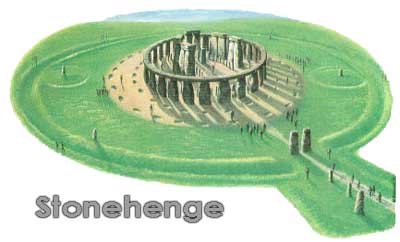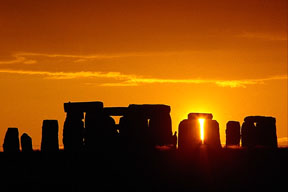BAMBU Latest Issues
BAMBU-10
See also:
BAMBU Archives: Contents
Brit-Am Megalithic Bulletin Update (BAMBU)
NEWS AND INFORMATION
Tracing The Israelite Paths of Migration
according to the Directions of the Prophet Jeremiah 31:21

Dolmens and Megaliths
BAMBU-10
Brit-Am Megalithic Bulletin Update
1. Some of the Megaliths of Wales
2. Megaliths as Astronomy
3. Regional patterning among the megaliths of
Galicia(NW
Spain)
4. Megaliths without Populations?
5. Motifs of Decoration
6. Baalbeck
in Lebanon
7. In Russia: Don ("Sambation")
River Region
8. Brit-Am Megalithic Research To Date
9. Wikipedia:
Dolmens of Russia. Pertinent Extracts
1. Some of the Megaliths of Wales
Bryn Cader Faner
http://www.stonepages.com/wales/wales.html
Cairn circle
Meirionnydd, Gwynedd
Isolated on a rocky eminence, Bryn Cader Faner is one of the wonders of
prehistoric Wales, as stated by Professor Aubrey Burl, and it is certainly one
of the most beautiful Bronze Age sites in Britain. It is a small cairn 8,5m
(28ft) wide and less than 1m (3ft) high, with fifteen thin slabs leaning out of
the mass of the monument like a crown of thorns.
Harold's Stones
http://www.stonepages.com/wales/wales.html
Standing Stones
Gwent
Nearest town: Raglan
2. Megaliths as Astronomy
http://www.megaliths.net/
Aenigmatis: South Wales
http://homepage.ntlworld.com/mjpowell/archaeo.htm
3. Regional patterning among the
megaliths of Galicia(NW
Spain)
http://cat.inist.fr/?aModele=afficheN&cpsidt=4291114
Extract:
Within the extensive plateau crossed by the upper Mi? there are a vast number of
tumuli. Their distribution is fairely homogeneous and they reach densities of up
to 6 mounds per km2. The graves goods recovered from some of these monuments
bear little relation to those in the costal areas, especially so by the later
part of the 3rd Millenium BC. Recent surveys have found that the biggest
concentrations of tombs are located near to natural passes or ridges that
connect the inland plateau with the eastern districts of La Coru? and Pontevedra
Provinces. We suggest that proximity to crossing points between different areas
was a important factor in the local setting of the mounds. On a larger scale the
same principle might explain the occurence of considerable clusters of monuments
close to natural passes between regions that were especialy important during
this period
4. Megaliths without Populations?
ArchaeoPundit
Megaliths and Evidence : Stones but no Evidence of Sedentary Villages
http://archaeopundit.blogspot.com/2004/03/megaliths-and-evidence-stones-but-no.html
Dating Mistaken?
Extract:
"A more current example is provided by
the absence of villages or habitations in Western European megalithic areas.
After a century of fieldwork, many authors still argue that the megaliths'
builders were necessarily sedentary and that their villages will eventually be
found."
5. Motifs of Decoration
http://www.chalain.culture.gouv.fr/culture/arcnat/
megalithes/en/art/artrep_en.htm
Classification. Major Types. Pictures.
6.
Baalbeck
in Lebanon
Baalbek in Lebanon is often described as a Roman edifice yet many see it as a
megalithic structure
that later may have been embellished by the Romans.
http://ancientmystery.info/megalithic-stone-works.htm
Extracts:
A very important Roman temple in
Lebanon, Baalbek
has the largest building stones ever used. Its walls contain stones of about 800
tons each and a 1000 ton stone was apparently abandoned in transit. (the largest
movable land based cranes in the world can lift 200 tons, sea based cranes are
larger)
Some observers have commented that it appears the stones were reused from an
earlier structure. Others insist that only Roman artifacts have been found here.
http://ancientmystery.info/Baalbek.htm
Scholars insist that evidence of
only Roman occupation has been found here. Perhaps they are correct. Yet the
only other stones in Roman works approaching this size I am aware of are three
found near the base of the Temple Mount in Jerusalem, also a site that may have
roots much older than known history.
7. In Russia: Don ("Sambation")
River Region
http://ancientworldblog.blogspot.com/2004_11_01_archive.html
A 09/01/2004 article in Pravda misleadingly entitled "Stonehenge on Don" by
Galina Shefer (translation by Anna Pavlovna Ossipova) reports that Alexander
Ludov has found rows of megaliths in the European part of Russia in the Aksai
river basin. The Aksai is a tributary of the Don River which flows into the Sea
of Azov, just northeast of the Black Sea.
8. Brit-Am Megalithic Research To Date
Brit-Am has not been studying this subject with the intensity it deserves.
It is important to us since one of our Biblical Proofs is based upon it.
The dolmens and megalith were the "signposts" Jeremiah told the Israelites to
set up along their paths of migration in order in future generations to prove their origins.
See:
"Dolmens and the Bible"
http://www.britam.org/Proof/Attributes/roleDolmen.html
Conventional Research more or less agrees with Brit-Am descriptions of the
Megalithic Monument Trail from the area of Israel to the west but disagrees with the dating.
Megalithic structures are dated to a time hundreds (sometimes even thousands!)
of years before
the Israelites were Exiled by the Assyrians.
A major aspect of our Megalithic research therefore concentrates on clarifying
the correct dating of the
megalithic monuments.
We have found that megalithic monuments in Western Europe could not have been
constructed at an
earlier date than the Late Bronze-Early Iron Ages due to the following reasons.
(a) Population Manpower
Requirements. They needed people to erect them and appreciate them.
(b) Technological Prowess Needed to put them up.
(c) Archaeological Findings Indicating Bronze and Iron Age Construction
(d) Length of Year Change and Astronomical Alignments
in Accordance with Present Calendar.
(e) Biblical Indications
We will elaborate on the above
sub-headings at a later date.
9.
Wikipedia:
Dolmens of Russia. Pertinent Extracts
http://en.wikipedia.org/wiki/Dolmens_of_Russia
Concentrations of megaliths, dolmens and stone labyrinths have been found (but
little studied) along Russia?s northern shores with the White Sea and the
Barents Sea as well as throughout the Caucasus Mountains.
Most of them are represented by rectangular structures made of stone slabs or
cut in rocks with holes in their facade. These dolmens cover the Western
Caucasus on both sides of the mountain ridge, in an area of approximately 12.000
square kilometres of Russia and Abkhazia.
The Caucasian dolmens represent a unique type of prehistoric architecture, built
with precisely dressed cyclopic stone blocks. The stones were, for example,
shaped into 90-degree angles, to be used as corners or were curved to make a
perfect circle...
While generally unknown in the rest of Europe, these Russian megaliths are equal
to the great megaliths of Europe in terms of age and quality of architecture,
but are still of an unknown origin. In spite of the variety of Caucasian
monuments, they show strong similarities with megaliths from different parts of
Europe and Asia, like the Iberian Peninsula, France, Great Britain, Ireland,
Netherlands, Germany, Denmark, Sweden, Israel and India...
Approximately 3.000 of these megalithic monuments are known in the Western
Caucasus, but more are constantly being found, while more and more are also
being destroyed.
The dolmens have a limited variety in their architecture... The court is usually
outlined by large stone walls, sometimes over a meter high, which enclose the
court. It is in this area that Bronze and Iron Age pottery has been found -
which helped date these tombs -, along with human remains, bronze tools and
silver, gold and semi-precious stone ornaments.
There is a source of water near dolmens all the time, 5-50 meters distance, and
sometimes it can be underground.

Megalithic Monuments may serve as proof of the Migratory paths of the Israelite
Exiles.
For a Map and List of Israelite Migratory Routes see:
http://www.britam.org/Questions/QuesHistory.html#Migratory
For more maps of the Megalithic Trail of Migration see:
http://www.britam.org/Proof/Attributes/roleDolmen.html
There is much archaeological evidence some of which we have
quoted in the past.
http://www.britam.org/Questions/
QuesArchaeology.html#Stonehenge
Dolmens and the Bible
Pictures: Dolmens from Around the World
Answer to Queries on Archaeology Question no.3:
"What do Dolmens and other megalithic monuments such as Stonehenge tell us?
Dolmens by Yair Davidiy
Dolmens in Biblical Codes
Immanuel Velikovsky and the Change in Our Calendar
Join the Brit-Am Ephraimite Discussion Group
Just Send an
e-mail
with "Subscribe" in the Subject Line
and in the Message
Main Page
Your Offerings and Orders for our Publications




